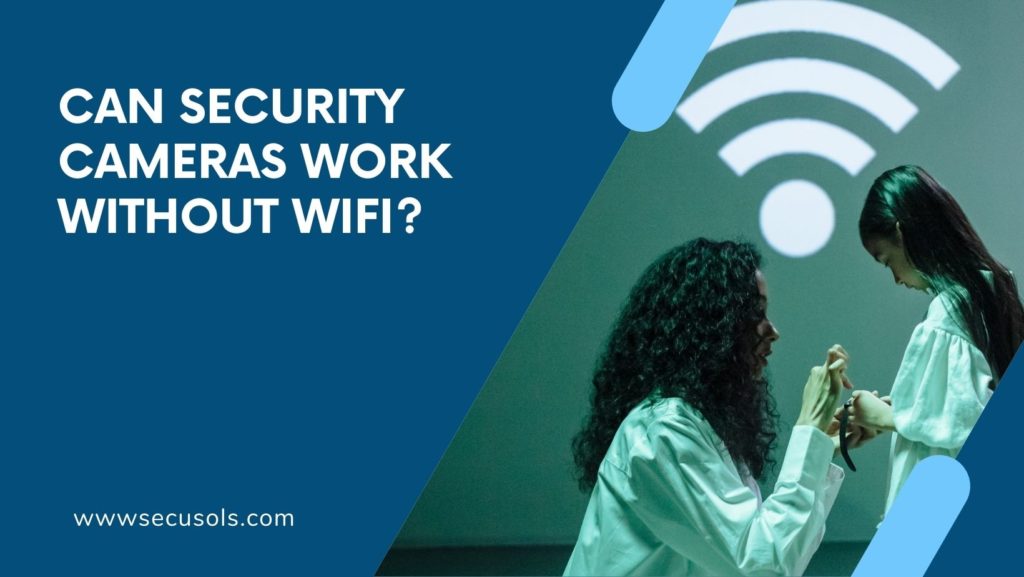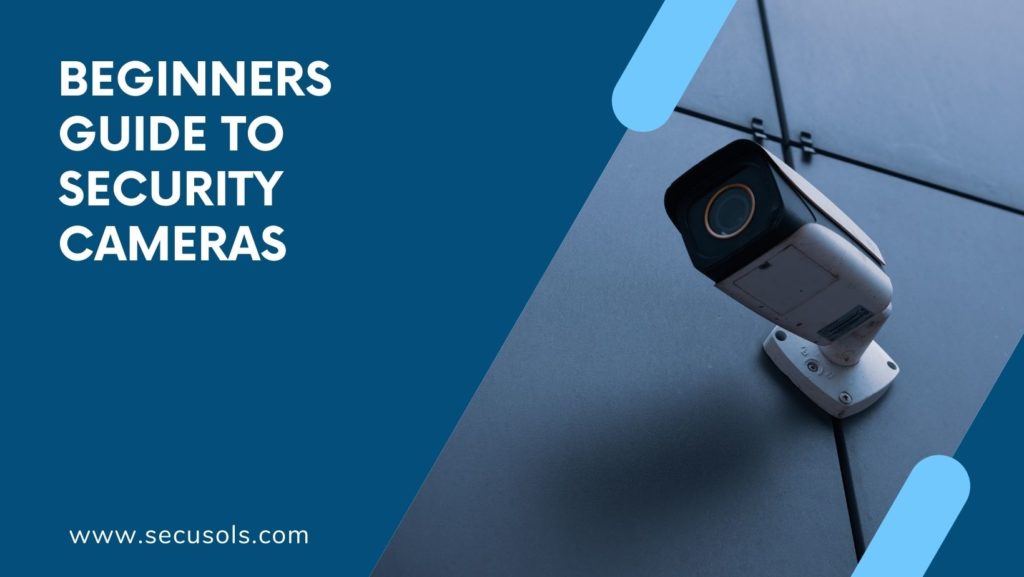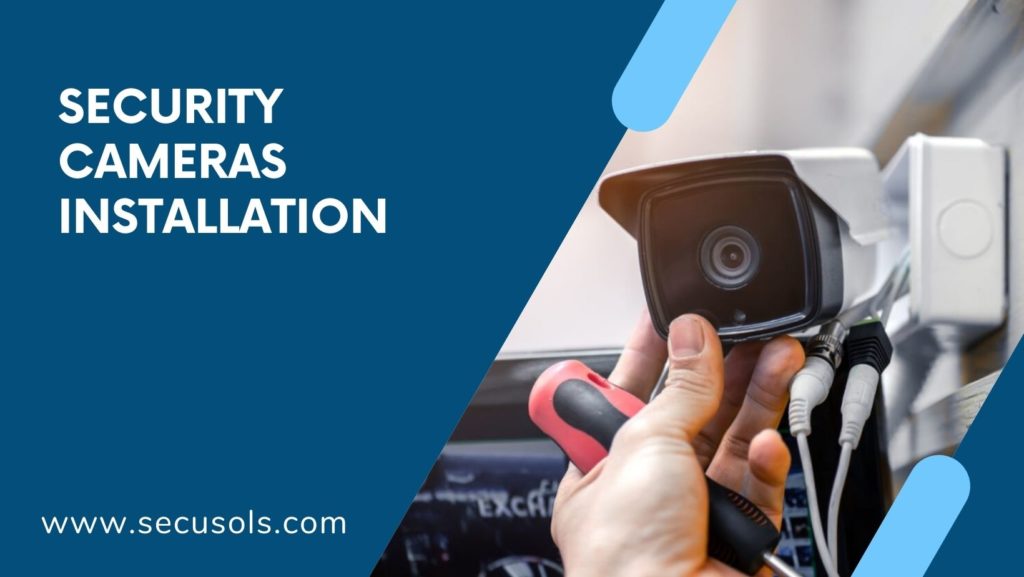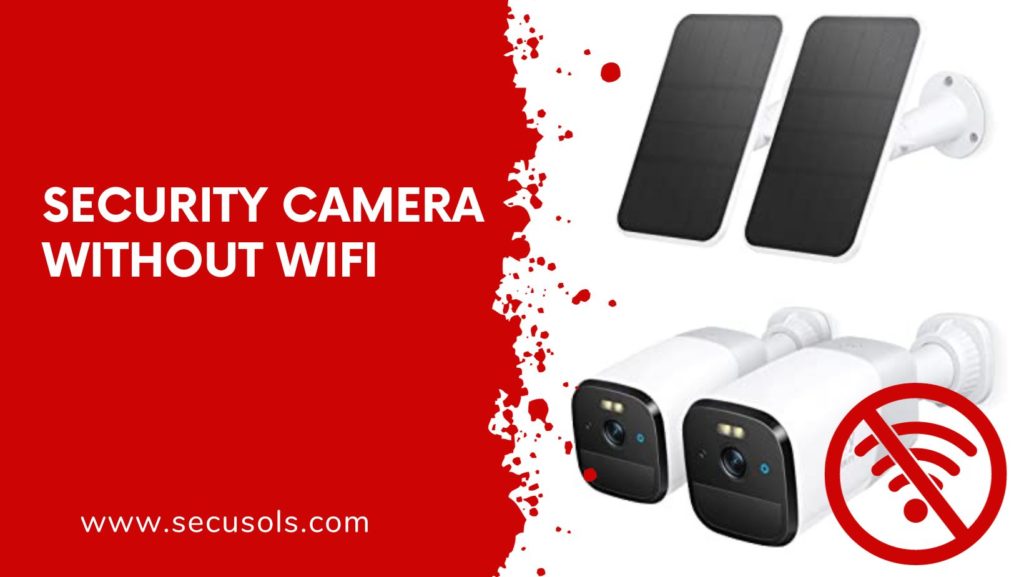Table of Contents
ToggleWiFi, the omnipresent wireless technology, has revolutionized the way we interact with security cameras. It’s the backbone that enables us to remotely access our camera feeds, receive instant alerts, and even integrate cameras into our smart home ecosystems. But amidst the benefits, a common question arises: Can security cameras operate effectively without WiFi?
Understanding WiFi-Dependent Features: How WiFi Elevates Security Cameras
A. Remote Access and Monitoring:
The ability to keep an eye on your property from anywhere in the world is a game-changer. Thanks to WiFi connectivity, you can use your smartphone or computer to log into your camera’s app or web portal, allowing you to check live feeds or review recorded footage. This real-time access offers a sense of control and awareness that was previously unimaginable.
B. Cloud Storage and Data Management:
WiFi empowers security cameras to seamlessly sync recorded footage to the cloud. Cloud storage ensures that your valuable recordings are securely stored off-site, guarding against theft or damage to the camera itself. This also allows for easy sharing of footage with law enforcement or insurance companies if needed.
C. Push Notifications and Alerts:
WiFi-enabled cameras can send instant notifications to your devices when they detect motion or other events. This immediate alert system keeps you informed of any potential security breaches in real-time, enabling quick response and necessary actions.
D. Integration with Smart Home Systems:
WiFi connectivity lets you integrate your security cameras with your smart home ecosystem. This means your cameras can work in harmony with other smart devices like lights, door locks, and alarms. For instance, if your outdoor camera detects motion, it can trigger your smart lights to turn on, deterring potential intruders.
Addressing the Question: Can Security Cameras Function Without WiFi?
While WiFi offers an array of benefits to security cameras, it’s important to note that not all security camera systems are entirely dependent on it. There are alternative connectivity options that can still provide reliable surveillance, even in areas with limited or no WiFi coverage. In our next segment, we’ll delve into these options and explore how security cameras can function without relying solely on WiFi.
WiFi-Independent Security Camera Options: Exploring Alternatives to WiFi
As we’ve established, WiFi isn’t the only path to securing your property. There are indeed options available that allow security cameras to function effectively without relying on a WiFi connection. Let’s dive into these alternatives:
A. Wired Security Cameras:
When you’re seeking a reliable and steadfast connection, wired security cameras come to the rescue. These cameras are tethered directly to your network using physical cables, ensuring a consistent and uninterrupted flow of data. Here are two prominent options under this category:
1. Ethernet-Connected Cameras:
Ethernet-connected cameras utilize Ethernet cables to connect directly to your router or network switch. This wired approach ensures a rock-solid connection, minimizing the risk of signal interference or dropouts. It’s an excellent choice for locations where you need consistent surveillance without any compromises.
2. Powerline Adapter Solutions:
Powerline adapter solutions offer a clever workaround for locations where laying Ethernet cables might be challenging. These adapters use your existing electrical wiring to transmit data signals, effectively turning your electrical outlets into network connection points. This solution bridges the gap between the reliability of wired connections and the convenience of existing wiring.
B. Cellular or Mobile Network Cameras:
If your surveillance needs extend beyond the reach of traditional networks, cellular or mobile network cameras step in as a potent solution. These cameras tap into cellular networks, ensuring connectivity even in remote areas. Let’s explore the options within this category:
1. SIM Card-Enabled Cameras:
Equipped with SIM card slots, these cameras connect to cellular networks just like your smartphone. Insert a SIM card from a compatible carrier, and your camera is ready to transmit data over the cellular network. This is particularly handy for remote construction sites or properties where wired connections are impractical.
2. 4G/5G-Compatible Options:
The emergence of 4G and 5G networks has opened new avenues for surveillance. Cameras compatible with these networks can provide high-speed data transmission, enabling real-time video streaming and remote access with minimal latency. This is a fantastic solution for locations where WiFi connectivity is weak or absent.
C. Local Storage Systems:
In cases where cloud storage isn’t the primary preference, local storage systems shine. These cameras store footage directly on-site, eliminating the need for extensive network connectivity. Here are the local storage options to consider:
1. SD Card or Onboard Storage:
Many security cameras offer the option to insert an SD card for storing recorded footage. This on-device storage solution is efficient and eliminates the need for constant internet access. However, it’s essential to remember that physical theft of the camera could mean loss of footage as well.
2. Network-Attached Storage (NAS) Devices:
For those who prefer a centralized storage solution, Network-Attached Storage (NAS) devices come into play. These devices connect to your local network and provide ample storage space for recorded footage from multiple cameras. It’s a fantastic way to maintain control over your data while eliminating reliance on external cloud storage.
Advantages and Limitations: Making Informed Choices for Your Security Camera Setup
A. Advantages of WiFi-Independent Cameras: Breaking Free from the WiFi Shackles
- No Reliance on Internet Connectivity: One of the standout advantages of WiFi-independent security cameras is their freedom from dependence on an internet connection. In scenarios where WiFi might be unstable or unavailable, these cameras maintain their surveillance duties without skipping a beat. This becomes especially crucial in remote locations or areas with erratic network coverage.
- Enhanced Security and Privacy: WiFi-independent cameras significantly reduce the risk of cyber vulnerabilities that can come with online connectivity. Since these cameras aren’t constantly connected to the internet, the chances of hacking or unauthorized access are notably diminished. This helps safeguard your privacy and ensures that your surveillance efforts aren’t inadvertently compromised.
- Stable and Consistent Performance: With no WiFi signal fluctuations to contend with, WiFi-independent cameras offer consistent and reliable performance. The absence of network congestion or interference translates to smoother video streaming, clearer images, and more accurate motion detection. This reliability can be especially critical when it comes to capturing crucial moments.
B. Limitations of WiFi-Independent Cameras: Balancing Trade-Offs
- Limited Remote Accessibility: While WiFi-independent cameras excel in autonomy, they do come with a trade-off in terms of remote accessibility. Without an internet connection, accessing live feeds and recorded footage from a distance becomes more challenging. However, this limitation can be mitigated with solutions like dedicated monitoring screens or occasional visits to the camera’s location.
- Potential for Higher Upfront Costs: The initial investment for WiFi-independent cameras can be slightly higher due to the specialized hardware and connectivity options they require. For example, cellular-enabled cameras come with costs associated with SIM cards and data plans. It’s essential to consider the long-term benefits against the upfront expenses to determine the overall value.
- Complex Installation Process in Some Cases: Setting up WiFi-independent cameras might involve a bit more complexity compared to their WiFi-enabled counterparts. For instance, running Ethernet cables or configuring cellular connectivity demands a certain level of technical know-how. However, advancements in user-friendly setup interfaces are making this process more manageable for users of varying technical backgrounds.
Choosing the Right Solution: Tailoring Your Security Camera Setup
So far, we’ve explored the world of WiFi-independent security camera options and delved into their advantages and limitations. Now comes the exciting part: selecting the perfect solution that aligns with your unique security requirements. Let’s walk through the essential factors you should consider when making this crucial decision.
A. Consideration of Surveillance Needs: Customizing Your Approach
When it comes to security cameras, one size does not fit all. Take a moment to assess your surveillance needs. Are you looking to monitor the exterior of your home, a remote construction site, or a large commercial space? The coverage area, lighting conditions, and the level of detail you need will influence the type of camera and connectivity that suits you best.
B. Budget Constraints and Long-Term Costs: Finding Value in Every Investment
While WiFi-independent cameras bring remarkable benefits, it’s essential to factor in your budget and the potential long-term costs. Consider not only the upfront expenses but also ongoing costs such as cellular data plans or maintenance. Striking the right balance between your financial constraints and your security needs ensures that you’re making a sustainable investment.
C. Ease of Installation and Maintenance: Convenience That Matters
Nobody wants a security camera setup that requires a Ph.D. in technology to install or maintain. Ease of installation and ongoing maintenance play a pivotal role in your experience. If you’re opting for wired solutions, assess the feasibility of running cables. For cellular options, check if the camera and network setup align seamlessly. Prioritize solutions that minimize technical hurdles and offer user-friendly interfaces.
D. Integration with Existing Security Systems: Creating a Cohesive Network
Your security cameras don’t operate in isolation; they’re part of a larger security ecosystem. If you already have security alarms, smart locks, or other surveillance devices in place, aim for cameras that integrate seamlessly. This synergy enhances your overall security strategy, allowing various components to work harmoniously to protect your property.
Future Trends and Innovations: Paving the Path for Enhanced Security
As we peer into the horizon of security technology, exciting advancements are poised to reshape the way we approach surveillance. Here are some promising trends that will influence the landscape of security cameras in the future:
A. Advancements in Cellular Technology for Security Cameras: Turbocharging Connectivity
Cellular technology continues to evolve at a rapid pace, opening new doors for security cameras. With the advent of 5G networks, cameras can harness lightning-fast speeds for seamless video streaming and remote access. Enhanced cellular connectivity ensures that your security cameras stay in touch with you, no matter where you are, without the constraints of WiFi limitations.
B. Hybrid Solutions: The Best of Both Worlds
In the realm of security cameras, we’re witnessing the emergence of hybrid solutions that blend the strengths of WiFi and non-WiFi features. These systems intelligently switch between connection options based on network availability, ensuring uninterrupted surveillance. Such versatility guarantees that you’re never left in the dark, whether you’re dealing with a momentary WiFi dropout or a complete loss of network.
C. Evolving Storage Options and Cloud-Independent Solutions: Taking Control of Your Data
The future holds promising innovations in storage solutions for security cameras. Cloud-independent options are gaining traction, allowing you to maintain complete control over your data. Advanced local storage systems, including cutting-edge Network-Attached Storage (NAS) devices, offer expansive storage capacities while keeping your footage secure within your premises.
Conclusion
As we conclude this journey through the world of security cameras and connectivity, it’s evident that technology is propelling us forward into a future filled with possibilities. The days of being tethered solely to WiFi are behind us. Today, we have an array of options that cater to diverse needs, locations, and preferences.
Embracing WiFi-independent security cameras means embracing freedom, control, and innovation. It means adapting to a landscape where reliability, privacy, and performance converge. The evolving trends we’ve explored signify that the security of tomorrow will be smarter, more resilient, and seamlessly integrated into our lives.
So, whether you’re safeguarding your home, monitoring a construction site, or ensuring the security of your business, remember that the journey doesn’t end here. It’s a journey of continual transformation, where the only constant is the commitment to keeping what matters most safe and secure.





